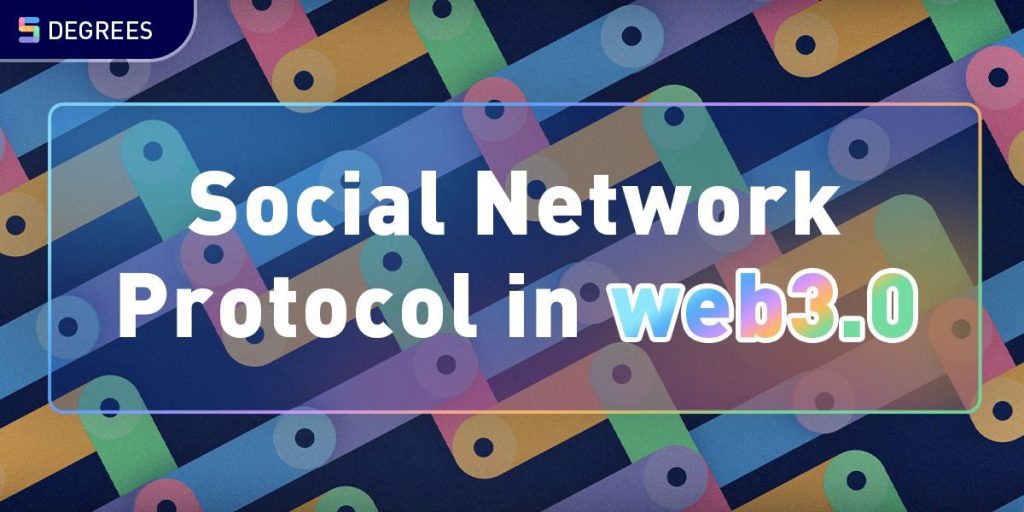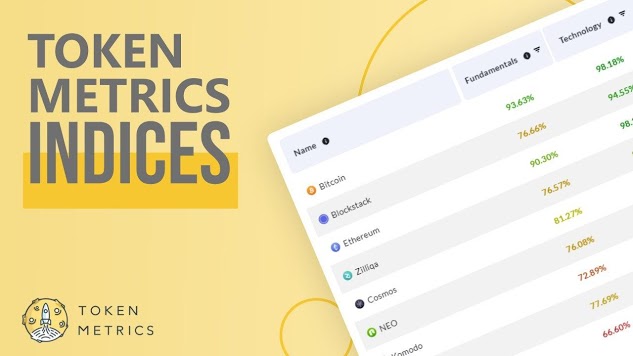What Solutions of the 5Degrees Are Incubated by TokenPocket Wallet?

5Degrees is an NFT-based decentralized social network protocol launched by TP at the beginning of this year, and its official website went live in January. 5Degrees believes that the core mission of Web3.0 should be to try to solve the problem of data ownership of Web2.0.
In January last year, when Aave founder and CEO Stani Kulechov was chatty on Twitter as he always did, no one could have imagined that his seemingly inadvertent tweet had become a prophecy.
“2021 is a year for decentralized social media to mature”.
At the beginning of this year, the decentralized information indexing and social application RSS3 and the Web3.0 social media protocol Lens Protocol founded by the Aave team had fruitful results with one year of construction.
Their products have gradually matured entered the large-scale testing stage.
Other seed players are running on this track: On January 26th, the Etherscan blockchain browser team Blockscan released the beta version of the Ethereum instant messaging tool Blockscan Chat.
KOLs in the crypto industry had been “early adopters” and released their test screenshots on social platforms.
In addition, Bluesky, a decentralized social media protocol plan initiated by Twitter, recently released its technical framework and concept.
The well-known encrypted wallet TokenPocket also launched the Web3.0 social protocol 5Degrees.
For a time, “social” once again stood at the forefront of the encryption circle and became a track that everyone wanted a share of the pie.
However, the above projects all have their own priorities, and most of them are still in the development and testing stages.
Before looking at each project carefully, we may first need to understand why the “Web3.0 social” has application prospects? And why is “now” its dividend period?
The Web3.0 social track bloom
On the current Internet, every time you use a website or application, you have to repeat a set of steps to register, set a password, add friends, post content, and socialize from scratch, and face the risk of being deleted and banned.
The root cause here is that our account information is stored in the independent servers of a single platform. These data will not be moved to another platform with the migration of the user.
We do not really “own” our data and only lease them from social companies and centralized entities.
The result of this problem is that our accounts are easily stolen. The information we publish is subject to severe scrutiny by regulators and centralized entities.
The phenomenon of “permanently suspended” has occurred from time to time.
On the other hand, this shackle also causes creators or KOLs on social platforms to be unable to truly “carry” their fan relationships.
When they move to a new platform every time, they have to go through a long process of acquisition and growth.
Criticisms on the above issues have become the consensus of the Web3.0 community and society as a whole.
Therefore, the public urgently needs better solutions, and many teams are working on building the next generation of social media.
People have been criticizing centralized social media for many years. As early as a few years ago, the social track had gone viral in the crypto circle but failed.
So why “now” is there a future for decentralized social media or Web 3.0 social?
As the saying goes, timing is essential. The first wave of decentralized social media in the crypto industry occurred around 2016, but at that time, on-chain applications such as DeFi and NFT had not yet started, and there was a lack of mature on-chain markets;
In addition, the crypto circle was small. Most of them had a solid speculative mind.
As a result, Steemit, the content, social platform on-chain, and the star project at that time, gradually lost the market with the flood of invalid information.
Today, the popularity of NFT and the re-emergence of the concept of Web 3.0 have put encryption at the forefront of social development like never before.
Encryption welcomes the largest audience ever, and media such as the New York Times gives reports.
Many executives and technical talents of Web 2.0 companies are flocking to the encryption industry.
With the support of mature on-chain markets such as DeFi, NFT, and Metaverse, it has become a daily life for many participants to be active in the on-chain space, and their needs for communication and display have become “rigid demands.”
5Degrees solutions
The concept of “decentralized social networking” conceived by developers is more abundant and mature than before, and there are project layouts in information indexing, social graph, communication, and other subdivisions.
The Web3.0 native social protocol 5Degrees Protocol incubated by the well-known encrypted wallet TokenPocket (hereinafter referred to as TP) may be a dark horse with the most implementation potential.
5Degrees is an NFT-based decentralized social network protocol launched by TP at the beginning of this year, and its official website went live in January.
5Degrees believes that the core mission of Web3.0 should be to try to solve the problem of data ownership of Web2.0 and return that ownership to the users themselves through blockchain technology.
It has launched three products around the “user relationship on-chain.”
On the one hand, the 5Degrees team integrates the 5Degrees protocol with Uniswap and PancakeSwap codes, and users can track the transaction of concerned accounts in the DEX version with social functions.
On the other hand, 5Degrees also has launched the “Web3.0 Social Bridge “, which bridges the Web 2.0 users to Web 3.0 and helps users in traditional social spaces such as Twitter to explore Web3.0 easily.
As for now, 5Degrees supports ETH, BNB Chain (formerly BSC), Polygon, and other public chains and will soon cover more public chain users.
How does 5Degrees achieve the above goals?
According to the 5Degrees white paper, the 5Degrees protocol has three significant features: simple enough, permissionless, and composable.
“Simple” refers to a direct and convenient user experience, “permissionless” means that the 5Degrees protocol can be integrated with other on-chain applications.
Composability refers to the ease of integrating 5Degrees with other on-chain application modules such as Uniswap, Opensea, Sandbox, etc., and provides surprising application scenarios.
Solid technical paths support the above three advantages. 5Degrees uses the ERC-1155 standard to build the protocol. The ERC-1155 protocol standard was first proposed in 2018 by Witek Radomski, CTO of blockchain game application platform Enjin.
Its core concept is that the same smart contract can manage an unlimited number of tokens of different types.
The earliest NFT (non-fungible token) protocol standard is ERC-721.
Still, it stipulates that every token creation requires an independent, smart contract, which is not friendly to development and use for application scenarios such as blockchain games.
Since its birth, the ERC-1155 standard has been widely used, especially for tokens such as “a certain model of a certain brand.” There are reports that many NFTs such as Sandbox and “mutation potions” airdropped by BAYC use this standard.
Compatibility with ERC-1155 means that 5Degrees can be easily embedded into any protocol layer or application layer of Web3.0 as long as the application of the integrated protocol supports the ERC-1155 standard.
The NFT generated in the agreement can be traded in any NFT market, and any smart contract that requires a user relationship can also confirm that on-chain by 5Degrees protocol.
Based on this protocol standard, 5Degrees capitalizes the user’s core data to generate NFTs (that is, “Follow” an address is equivalent to mint a token with this address as the ID).
These NFTs can be traded in any NFT market and integrated with any DApp (decentralized application).
Various user entities build relationship networks by minting target NFT, thus forming a huge, transparent, unified, and permissionless entity-relationship network infrastructure.
Therefore, the user relationship provided by 5Degrees is wholly stored on a chain, which is safe and reliable.
Users can master and “carry” their own social relationships on-chain through 5Degrees; Besides, project developers no longer need to worry about user relationships’ inaccessibility and can use the permissionless relationship network to develop products.
Existing products and future plans
5Degrees has launched personal homepage products Fans3.0, Uniswp, and PancakeSwap with social modules and Web3.0 Social Bridge.
Fans3 provides a Web3.0 Profile similar to Facebook’s personal homepage.
After entering the page, you can choose to connect your wallet address or fill in the address of an account you are concerned about, and you can visually check its holdings, which is highly convenient to use.
Currently, the personal information that Fans3 supports to display includes tokens, NFTs, POAPs (Proof of Attendance), DeFi (interactive DeFi applications and corresponding transaction volumes), and domain identities such as ENS, DAS, and RNS.
More information may be supported in the future as the 5Degrees application is widely rolled out.
In Uniswap and PancakeSwap with a social module, 5Degrees integrates with the open-source code of Uniswap and PancakeSwap.
Users can directly track the transaction of the account addresses you are concerned about and learn his buying and selling in real-time.
After clicking “Connect Wallet” and viewing the 20 transactions of your account address in the past three months and the address transactions you are following, you can browse and follow the current trends of major players or KOLs on the network.
“Trending” lists are the wallet addresses with more fans. Judging from the enthusiasm for following the wallets of Vitalik Buterin, Justin Sun, SBF, Three Arrows Capital, and other KOLs or capital giants, this column may release more application potential in the future.
Web3.0 Social Bridge is a portal for Web2.0 users to enter Web3.0 and also provides a channel for current Web3.0 users to connect Web2.0 relationships to Web3.0.
“Shown in the list” supports linking the Twitter account with the wallet address. After entering the wallet address or Twitter name in the lower right corner, you can view the corresponding related information.
According to the 5Degrees official website, the continuous expansion of the 5Degrees ecosystem will also support functions such as instant reminders and trending topics.
Comparison of competing products
Among the famous players in Web3.0 social networking, Lens Protocol, RSS3, and CyberConnect have a similar focus with 5Degrees.
All four products support Profile (personal homepage) and on-chain social relations in terms of core functions. Lens Protocol and CyberConnect have extended to content and communications.
But from the perspective of application prospects, it is not that the more functions, the better.
Although Lens Protocol additionally supports content publishing (“Post”) and comments on top of its essential functions, it essentially focuses on post and monetization.
Thus more on the “creator economy” (Holding NFT to obtain the ownership of content), its audience may be mainly KOLs and popular creators, rather than the wider Web3.0 ordinary users, and the coverage may be limited.
The vision of 5degrees is to become the underlying protocol for Web3.0 social networking, rather than being limited to a specific type of application. In this way, any other Dapp can access and integrate with it.
For example, Team A has launched an on-chain version of Twitter through the 5degrees protocol; Team B has added a Moments module to OpenSea.
OpenSea users can easily know which NFTs their friends in Moments are playing and quickly find out which community they belong to.
Team C can even revolutionize the existing social model of Web2.0 and make a brand-new on-chain social application.
Pare down to the essence, 5Degrees, by polishing the most basic and core functions of “social” and leveraging the rapid scalability of ERC-1155, can provide a broader imagination for future on-chain social interaction and give play to unlimited possibilities.
In addition, from the perspective of product type and development progress, both RSS3 and Lens Protocol are still in the testing stage.
The current Lens protocol is launched on Polygon’s Mumbai test network, and the official product has not yet been available.
On the other hand, the Lens protocol is more like a backend for various social media developers than an already developed, ready-to-use front-end product.
Let’s say data storage. 5Degrees adopt complete storage on-chain and have convenient cross-chain compatibility supported by ERC-1155.
The Lens is based on Polygon. RSS3 currently takes a relatively centralized solution, and now it is run by the server of its founding team.
It is expected that the Ethereum side chain will be built in the future, and the decentralized storage and verification will be gradually carried out.
CyberConnec uses the decentralized database protocol Ceramic, but its data is finally stored on IPFS, the centralized server of miners, and data availability is a big problem.
Composability and modularity is a major engine that inspires cryptographic innovation. As for Dapp access, both RSS3 and CyberConnect require a special API to integrate with various crypto applications.
Both 5Degrees and Lens provide permissionless access, but Lens has built a set of protocol standards that developers have to apply to access successfully.
5Degrees is built on the ERC-1155 protocol standard, which many existing applications already use.
Its technical bottom layer has a lower threshold for developers and is more friendly.
Finally, except for RSS3, the other three major application protocols, including 5Degrees, have not issued tokens.
Currently, 5Degrees is inviting KOLs to settle in. If you have a community foundation and an active on-chain transaction history and are curious about SocialFi applications, join the experience now.
According to 5Degrees, KOLs enjoy priority access to airdrops, promotions, and other opportunities.
Conclusions
To sum up, the Web3.0 social track has benefited from the maturity of crypto applications and the accumulation of active users and is currently in the early stage of the outbreak.
The 5Degrees Protocol incubated by TP, with its convenient and easy-to-use ERC-1155 standard, is committed to providing a convenient follow and social experience for ordinary on-chain transaction users and Web3.0 explorers with the simplest logic.
Its openness and lightness may lead to a wave of widespread application of Web3.0 social networking to integrate more protocols.
Disclaimer
All the information contained on our website is published in good faith and for general information purposes only. Any action the reader takes upon the information found on our website is strictly at their own risk.















